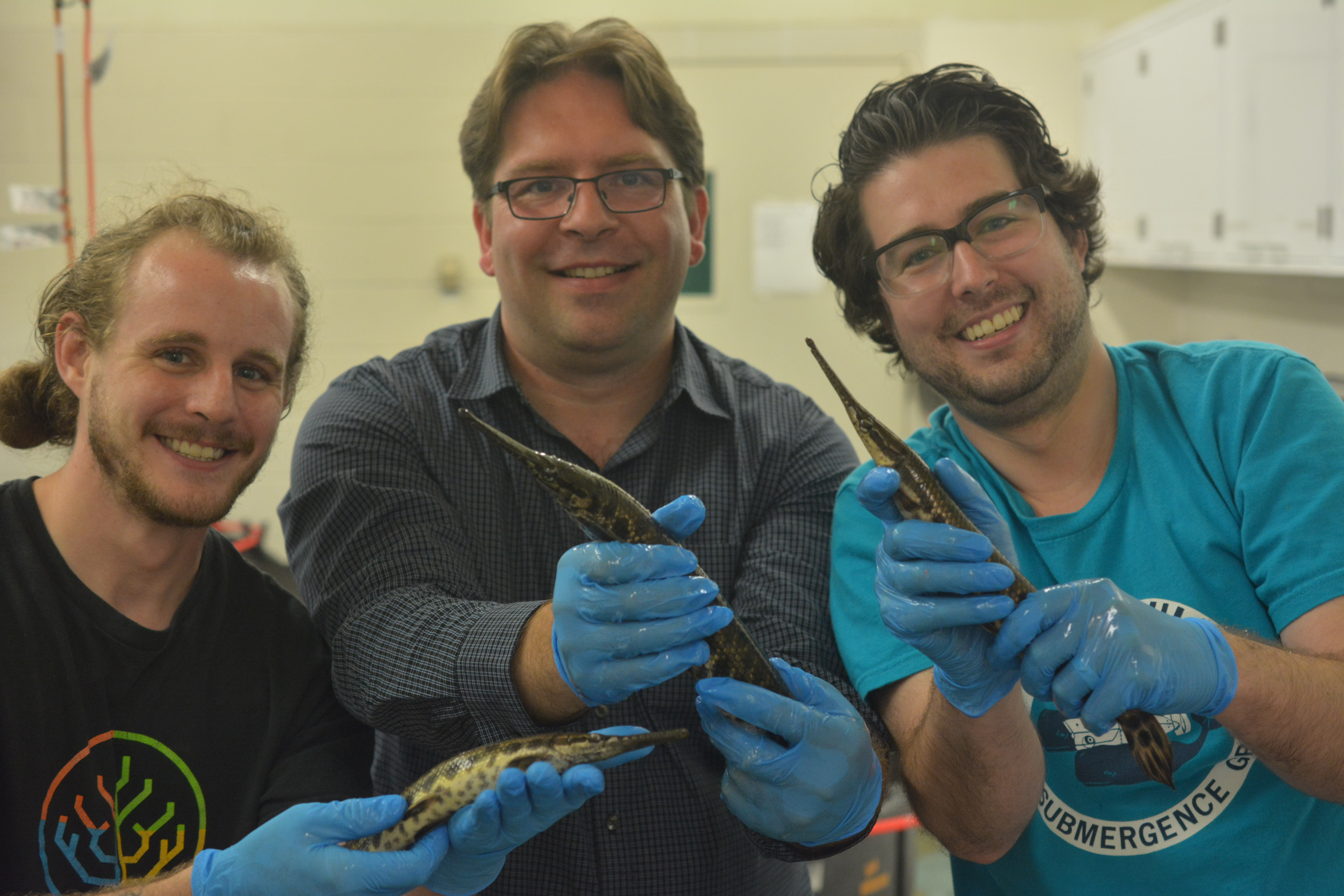Fishing for answers to life's mysteries
Evolutionarily speaking, the spotted gar is a bit of an old soul.
That's why Ingo Braasch, a Michigan State University assistant professor in the Department of Integrative Biology and the Ecology, Evolution, and Behavior Program, is so interested in helping other scientists study the fish. It's also why the National Science Foundation is investing over $1.6 million to help.
With this new NSF EDGE grant, which stands for Enabling Discovery through Genomics, Braasch and his team are working to establish the spotted gar fish as a model organism to spur research in evolution, development and human biology. The goal is to make genetic studies in these fields more accessible to investigators with an assist from a slender, spotted fish with a unique history in Michigan.

Ingo Braasch (center) poses in 2019 with members of his team, gar facility manager Brett Racicot (left) and postdoctoral associate Andrew Thompson (right), holding spotted gar grown at MSU. Courtesy Ingo Braasch
"Scientists routinely rely on animals as model organisms to suss out what specific sets of genetic instructions, or genes, do. Humans share many genes with many different creatures and it is much easier and much more ethical to study what those genes do in animal model systems," Braasch said. "Still, validating animals as research organisms and then deciphering what they can teach us about human biology is no small feat."
"When it comes to understanding vertebrate animals, including humans, so far there are still really relatively few models that we use," Braasch said. Such models include mice, chicken, frogs and zebrafish. "If you want to use zebrafish to understand human biology, you can do that, but there are a lot of challenges in interpreting the data."
Read more at MSU Today.



